Islands off the east coast of Africa have their individual ‘personalities’ but their appeal is universal, writes Michelle Colman.
The Indian Ocean islands offer a perfect match to a client’s sub-Saharan itinerary, says Michelle Forrester, Contracting Executive Indian Ocean Islands for Tourvest Destination Management.
She says the islands offer relaxing beach holidays and good weather as well as cultural and historic interest, hiking and scenery and, of course, water sports. She points out that each island has an amplitude of accommodation styles across all gradings and inclusions to suit all budget types.
Zanzibar and Pemba, Tanzania
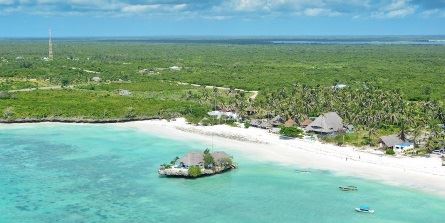
Zanzibar’s African-Arabian mix is an exotic fusion and one that is tempting visitors in growing numbers. Much of its appeal lies in its relative lack of commercialisation, yet it is not without comforts and it sports some top-of-the-range hotels. What’s more, there is surprising value to be had across all levels of accommodation.
The area commonly known as Zanzibar is an archipelago of two main islands and around 50 smaller ones lying off the east coast of Tanzania. The main island, Unguja, is in fact the Zanzibar we refer to. The second in size is Pemba, even less developed and closer to nature than Unguja.
With cloves, nutmeg and cinnamon in production, the islands claim the moniker of ‘Spice Islands’. Endemic flora and fauna – the Red Colobus monkey springs to mind, as does the Pemba flying fox, a large fruit bat – are attractions.
The destination is safe, the beaches are good, and the best time to travel is between June and September, a period of dry, cool months in the tropical climate.
Hein Kaiser, Spokesperson for low-cost airline, Mango, which flies between Johannesburg and Zanzibar, notes two periods in the year when value is at its peak. Between April and June the island experiences its monsoon season, when tourism services are more affordable. As it generally does not rain all day, a good beach holiday is still possible. The second period is October and November, when the European peak season has dwindled and the weather has not yet reached its hottest temperatures.
The islands attract divers, with the best times for exploring the deep being July, August, February and March. Pemba is said to have East Africa’s finest diving sites.
The souks and slave trade centres of the old Stone Town, a World Heritage Site, beg to be discovered. Other must-dos include a trip to a spice farm, a dhow cruise and swimming with dolphins.
The language of the islands is Swahili but English is spoken in tourist attractions and resorts. To respect the largely Muslim community, sensitivity to locations where modest dress is required is advised, as well as drinking alcohol where it would be discourteous.
Although 18% VAT was brought into force in July on several tourism services, accommodation is exempt. Services liable for VAT include park fees, ground transport, tour guiding, game drives and water safaris.
Madagascar
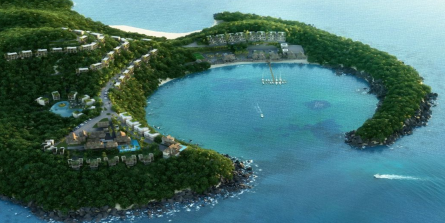
Madagascar is a place of considerable geological diversity. It has rain forests, mountains, extinct volcanoes, deserts, swamps and coral reefs, along with a vast amount of endemic fauna (over 100 species of lemurs) and flora.
The population is a mix of African, Arabic and Indian, presenting varied opportunities for cultural encounters. Diving and snorkelling are excellent, hiking in national parks is popular, and the unspoilt beaches stretch for miles. Road infrastructure, however, has its challenges and car rental may involve hiring a driver too.
Off the north-west coast of the island are some smaller islands, including the highly recommended Nosy Be, where the smell of vanilla, coffee and ylang-ylang hangs thick. Says Karin Murray, Marketing and Sales Manager for Airlink, which flies between South Africa and Madagascar: “The island boasts some of the most beautiful beaches in the Indian Ocean, lined with coconut palms and caressed by turquoise waters, offering that remote idyllic tropical experience we all dream about. It is also possible to stay on one of the many smaller islands nearby – Nosy Iranja, Nosy Komba, Nosy Mitsio, Nosy Sakatia, and Nosy Tanikely.”
Murray says world-class scuba diving and snorkelling are on offer as well as sport fishing, cruising on fully crewed catamarans and sea kayaking, or guests can also simply laze on the beach. “As the climate is mild, the sea is always relatively calm and winds are moderate. The hoteliers, the diving companies, the guides and the other service providers are proud, passionate and professional.”
“Nosy Be offers travellers a taste of everything Malagasy – the endangered and unique lemurs, chameleons, pristine national parks and marine reserves, local rum and delicious seafood, beaches and activities.” She says guests can also venture beyond Nosy Be on day-trips or longer charters to enjoy the many smaller islands and bays in the area. “With more than 5 000 hotel beds and lodges, Nosy Be caters for all tastes and budgets.”
Airlink connects Johannesburg with the Madagascan capital, Antananarivo, daily and operates a weekly direct flight from Johannesburg to Nosy Be on Sundays. The best time for a visit is September and October.
Quirimbas and Bazaruto Archipelagos, Mozambique
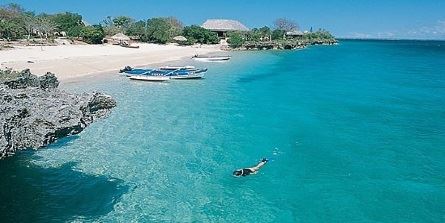
Mozambique has two island groups in the Indian Ocean, the Quirimbas and Bazaruto.
The Quirimbas chain is made up of some 30 islands, stretching from Pemba to Palma, and include Ibo, Matemo, Medjumbe, Quilalea and Vamizi Islands. They are renowned particularly for their diving sites.
Bazaruto consists of six islands, to which the gateway is Vilanculos on the mainland. The islands are Bazaruto, Benguerra, Magaruque, Santa Carolina (or Paradise Island), Bangué and Shell. The archipelago is a marine reserve.
Both archipelagos boast pristine beaches, healthy coral reefs and clear waters where it’s quite easy to spot a whale shark, manta ray, or even a rare dugong as you snorkel or sail gently in a dhow. There’s no crowding of resorts here, and the ‘desert island’ atmosphere that so many tourists desire is intact.
Cultural strains in Mozambique include African, Arabic and Portuguese, which have all had a strong influence on the cuisine, where seafood plays a leading role.
Airlink connects Johannesburg and Pemba with direct flights on Mondays, Wednesdays, Thursdays, Fridays and Saturdays. The carrier also operates a Johannesburg-Vilanculos flight on Mondays, Tuesdays, Wednesdays, Fridays and Saturdays (return flights daily). It also flies from Nelspruit KMIA to Vilanculos on Thursdays and Sundays.
Seychelles
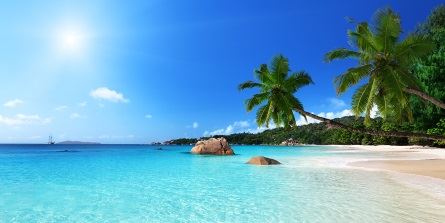
An archipelago of 115 islands, the Seychelles is something of a celebrity magnet. It also has a reputation for high prices, although research will yield some less-expensive accommodation options.
Most of the tourism infrastructure is on the 43 Inner Islands, which are around the principal islands of Mahé, Praslin and La Digue. The Outer Islands are 72 low-lying sand cays and atolls between 230km and 1 150km from Mahé. Some are little more than rocky outcrops, offering untouched habitats for many species of wildlife. This is also prime terrain for sailing, fishing and diving.
The islands are famed for endemic natural specimens such as the largest seed in the world, the Coco-de-mer; the jellyfish tree, of which there are only eight surviving examples; the Seychelles Paradise flycatcher and Seychelles warbler. They are home to two World Heritage Sites: Aldabra, the world’s largest raised coral atoll with over 150 000 giant tortoises, and Vallée de Mai Nature Reserve on Praslin.
With this wealth of wildlife, the development of amenities with an ecological slant is unsurprising, such as North Island 30km from Mahé, rehabilitated in association with Wilderness Safaris. Says MD of North Island, Bruce Simpson: “The pristine natural beauty of the Seychelles has long attracted travellers from across the globe in search of a destination renowned for its authenticity, privacy and exclusivity.”
As with other Indian Ocean islands, the Seychelles has multicultural roots, reflected in folkloric arts and cuisine. Three official languages are spoken – Creole, English and French.
Conditions for swimming, snorkelling and especially diving, are superb during April and May and October and November when the water temperature sometimes reaches 29˚C and visibility is often more than 30m.
Mauritius
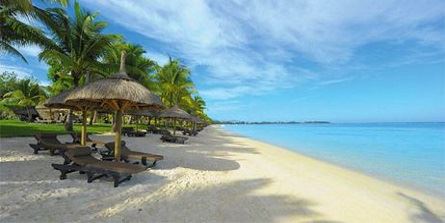
Mauritius, an island ringed with hotels and superb beaches, offers a sophisticated holiday product and operators that run a slick shop.
Most hotel properties provide an all-inclusive product where non-motorised water sports are a focus and each day provides a programme of recreational activities, followed by evening entertainment and a themed dinner. Kiddies’ clubs that keep the young ones busy are a big plus for families. From being greeted on arrival by Sega dancers to the time they head off for the airport, tourists generally experience high standards and a stress-free holiday.
However more independent types are now catered for by a growing amount of self-catering facilities, apartments and villas, particularly in the Grand Baie area in the north. Once a fishing village, Grand Baie is now a small, bustling town with restaurants and bars, boutiques and night clubs.
Once faulted for being limited in out-of-hotel excursions and activities, Mauritius has improved tremendously on this score and there are now many options to explore sites in the lush interior of the island. Many are geological wonders – peaks, craters, forests and waterfalls. One of the most favoured is the volcanic phenomenon at Chamarel, where the earth is coloured seven shades; an 83m-high waterfall provides one of the viewing spots.
Sports-wise, deep-sea fishing has always drawn the adventurous angler and, nowadays, a clutch of golf clubs caters for those who want time on the greens.
French, African, Indian and Chinese threads are wound into the Mauritian cultural tapestry and have given birth to a rich Creole cuisine.
The most pleasant times to visit the island are between April and June and from September to December. Keen competition among hotel chains has led to spirited claims on which side of the island it is best to holiday, east or west. The cyclone season runs from November to April, but most cyclones miss the small island and most beach resorts are built to withstand extensive damage.






















